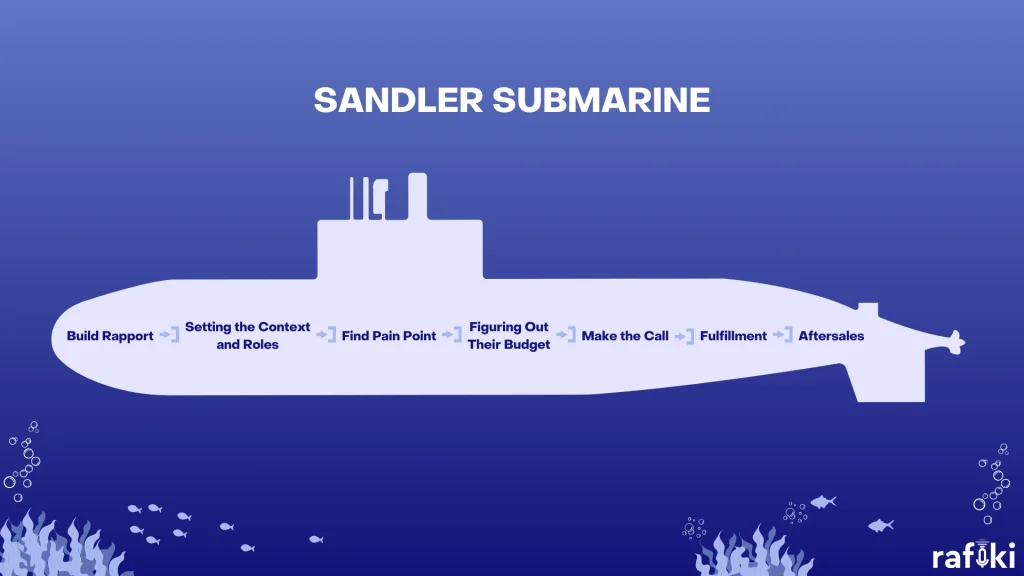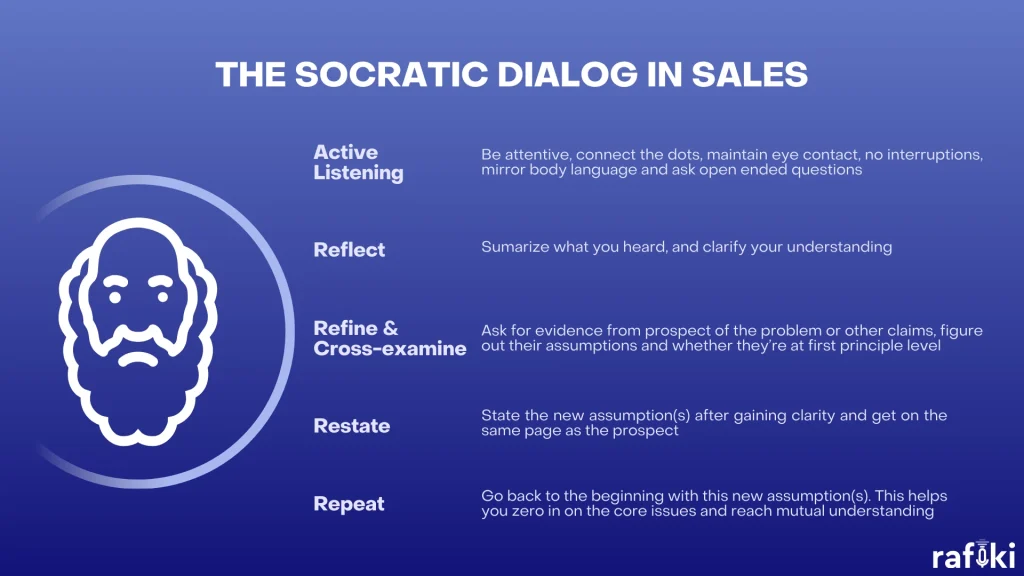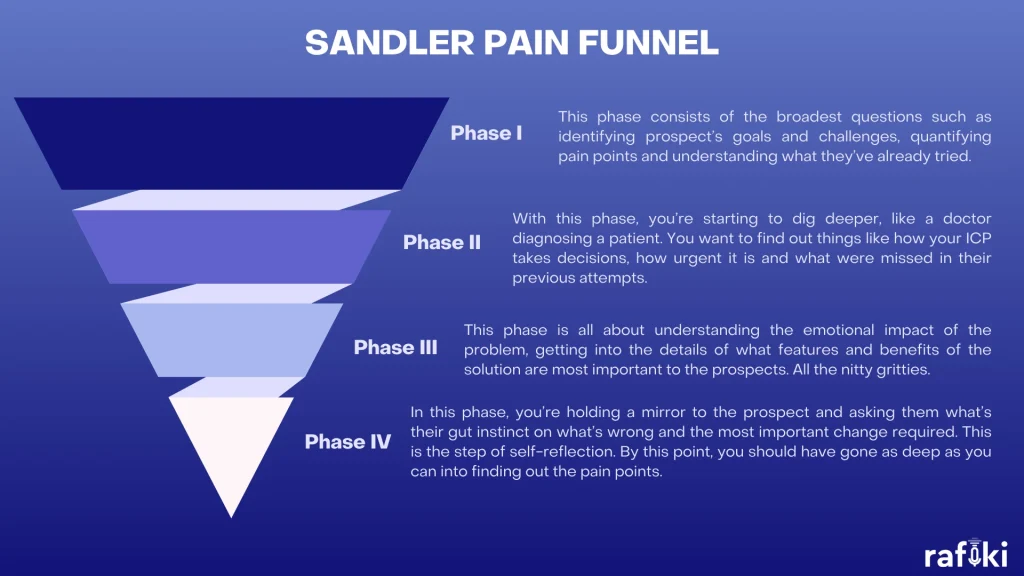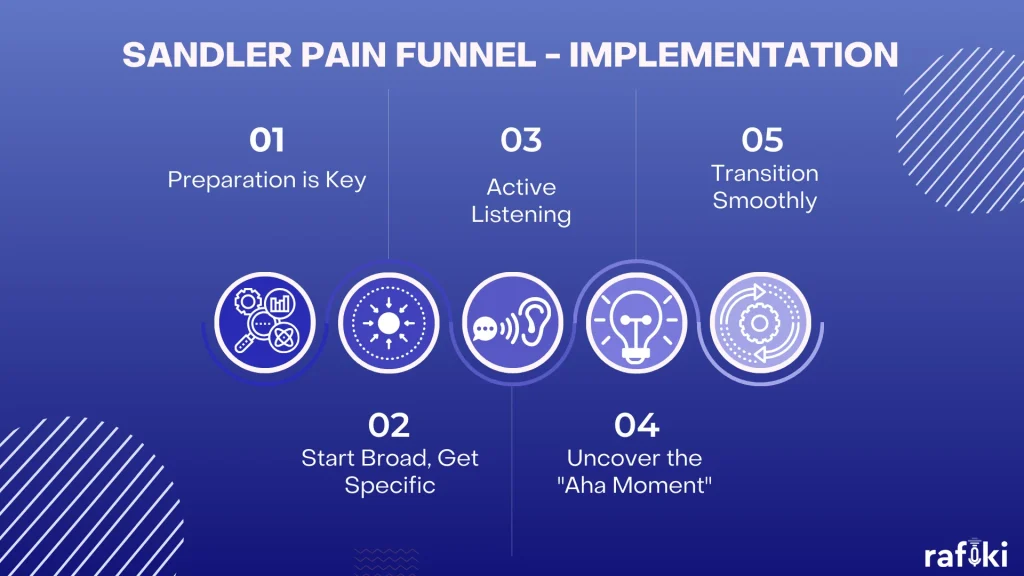Why Rafiki
Pricing


Pricing
Solutions

RevOps Leaders
Synchronize revenue generating functions

SDR Leaders
Get your team aligned and Coach your Reps 3x faster at scale

Sales Leaders
Unlock pipeline truth, drive confident forecasts

Sales conversations can feel like a guessing game. You pitch benefits & features, but are you hitting the right buttons? Enter the Sandler Pain Funnel.
It's a framework that flips the script. Instead of pushing your product, you uncover your prospect's true needs and frustrations. Think of it as a roadmap to unearthing hidden desires and building trust. By the end, your prospect won't just hear your pitch, they'll be asking for your solution.
Let’s get started!
The Sandler Pain Funnel is part of the Sandler Sales Methodology developed by David Sandler. It consists of 7 stages, namely:

The Sandler Pain Funnel is the third stage of finding the pain point of the prospect. Imagine a world where your sales conversations ditch the hard sell and ignite a spark of desire in your prospects. That's the power of the Sandler Pain Funnel.
It flips the script on traditional tactics, transforming you from a product pusher into a trusted advisor. Here's the core concept: most prospects aren't fully aware of their problems, or they might underestimate the impact of their challenges. The Sandler Pain Funnel acts as your roadmap to guide them to this realization.
By asking insightful questions, you become a detective, uncovering hidden desires and frustrations. You'll delve deeper than surface-level complaints to unearth the emotional impact of these challenges. This "aha moment" is where the magic happens. When prospects see the true cost of their pain points, they become receptive to solutions that genuinely address their needs. So, the Sandler Pain Funnel isn't about manipulation; it's about building trust and establishing yourself as an expert who can navigate them towards a better reality.
When thinking of the approach of asking insightful questions, one is hard pressed not to connect it with that of the age-old Socratic Method. This ancient Greek philosophy involved a teacher guiding students to truth through a series of probing questions.

Similarly, the Sandler Pain Funnel equips you with the right questions to prompt self-discovery in your prospects. Thus, by fostering a thoughtful dialogue, you gently nudge them to recognize the root of their challenges, setting the stage for a solution-oriented conversation. This collaborative approach builds trust and positions you as a thought leader, not just another salesperson.
The Sandler Pain Funnel isn't about bombarding prospects with questions. It's a strategic dance, a conversation where you actively listen and guide. Here’s a high level view of the funnel:

Here are 15 key questions, categorized to illuminate your prospect's world:
Keep in mind, these are just starting points. Rafiki's Smart Call Summary can ensure you capture every nuance of the conversation, including these key questions and their answers. This empowers a deeper understanding of your prospect and sets you up for a winning presentation.

Integrating the Sandler Pain Funnel into your sales process is a breeze. Here's a roadmap to get you started:
Before every call, delve into your prospect's background and research their industry challenges. This equips you with targeted questions.
Begin with open-ended questions to understand their goals. Gradually hone in on their pain points with probing questions.
Pay close attention to both verbal and nonverbal cues. Silence can be golden; let them elaborate on their frustrations.
Guide them to a point where they recognize the true impact of their challenges. This is where empathy shines.
Once you've unearthed their needs, transition to showcasing how your solution directly addresses their pain points.
Remember, the Sandler Pain Funnel is a continuous conversation. Rafiki's Smart Follow Up can automate crafting personalized emails that reference key discussion points and next steps identified during the call. This keeps the momentum going and positions you as a trusted advisor, not just a salesperson.
The Sandler Pain Funnel isn't an end unto itself. It's the foundation for building a strong sales pipeline. Once you've identified your prospect's pain points, it's time to move towards closing the deal. Here's what comes next:
The Sandler Pain Funnel remains a powerful tool, but the sales landscape is constantly evolving. Here's how to adapt it for the success in 2024:
The Sandler Pain Funnel isn't a magic bullet, but it's a powerful tool for any sales leader's arsenal.
Unearth Your Prospects' Pain Points
By prioritizing buyer needs and fostering genuine conversations, you can build trust, close deals, and ultimately, unlock the true potential of your sales team.
So, are you ready to transform your sales conversations?